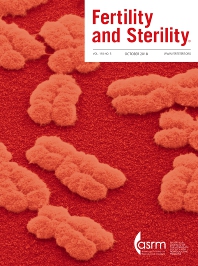Objective: Phorbol 12-myristate 13-acetate (PMA) is the most powerful stimulant of cellular generation of reactive oxygen species (ROS). Enhanced PMA response has been correlated with poor semen quality, reduced sperm fertilizing potential and male infertility. The objective of this study was to investigate PMA response in pure sperm (free of leukocyte contamination)
obtained from leukocytospermic patients.
Design: A prospective clinical study in a male infertility clinic.
Materials/Methods: Semen samples from 48 patients were examined according to the WHO criteria. Patients were classified into 2 groups, leukocytospermic (n 5 16) and non-leukocytospermia (n = 32). Samples from normal donors (n = 13) were used as controls. Leukocytes were removed from the sperm suspensions using Dynabeads coated with anti CD45 antibodies and the lack of residual leukocyte contamination was confirmed by the formyl methionyl leucyl phenylalanine (FMLP) provocation test. Basal levels of ROS were determined in pure sperm suspensions and PMA provocation test was used to assess the residual capacity of sperm cells for ROS production. The results were expressed as x106 counted photons per minute (cpm)/20 x 106sperm/mL.
Results: ROS levels [median (interquartile range 25% and 75%)] were significantly higher in the leukocytospermic group [3.2 (0.65, 6.8)] compared to the non-leukocytospermic group [0.31 (0.09, 1.2)] (P = 0.002), and donors [0.06 (0.01, 0.2)] (P = 0.001). Complete removal of leukocytes was confirmed by negative FMLP response. PMA-induced ROS generation was significantly higher in pure sperm from leukocytospermic samples [9.2 (2,373.7)] compared to the non-leukocytospermic samples [0.94 (0.3, 2)] (P <0.0003), and the donors [0.1 (0.03, 0.1)] (P = 0.0002). A significant positivecorrelation was observed between PMA-induced ROS in pure sperm and seminal leukocytic counts (r = 0.56, P < 0.0001), while PMA-induced ROS in pure sperm was negatively correlated with sperm concentration (r 5 0.65,P < 0.0001), sperm motility (r = 0.44, P = 0.0003), and WHO morphology (r = 0.47, P 5 0.0001).
Conclusions: Our study demonstrates a strong correlation between leukocytospermia and enhanced sperm-derived PMA response. Increased residual capacity for ROS production in sperm from leukocytospermic samples reflects the poor quality of these sperm. Effective medical treatments to
control leukocytospermia in these patients may result in improvement of their sperm quality.


